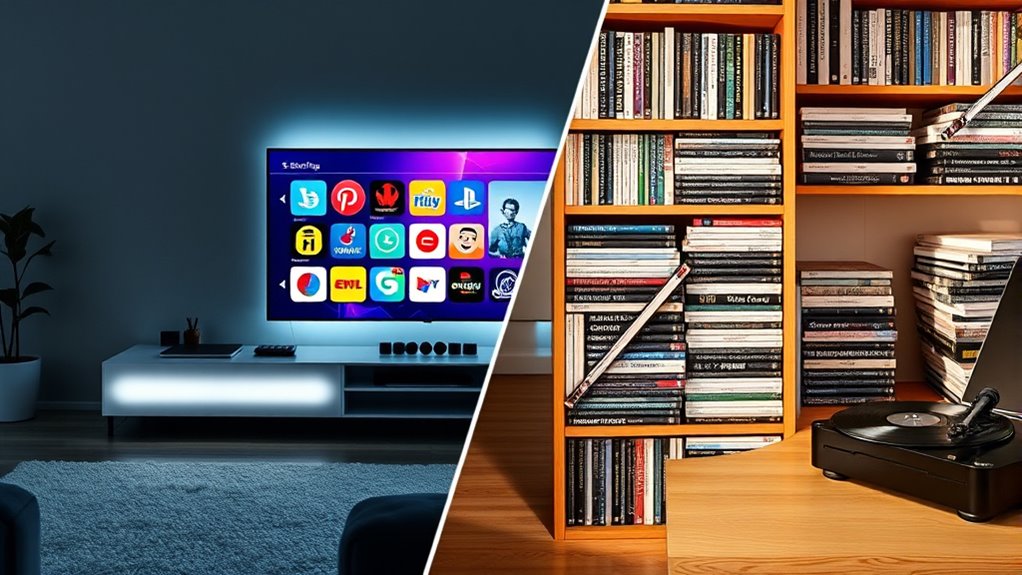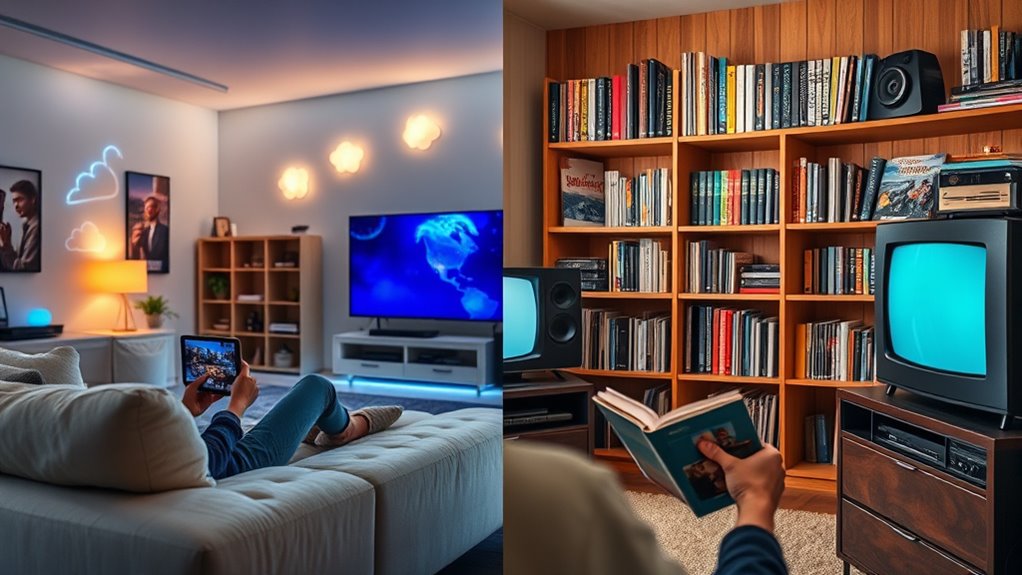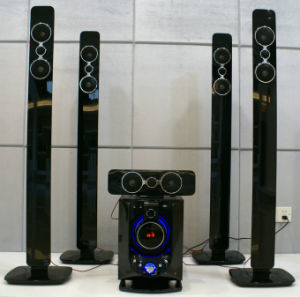Streaming offers you instant access to a vast library of content anytime, making it highly convenient and clutter-free since there’s no need for physical storage. However, you don’t own the media permanently, and your access depends on internet quality and service restrictions. Physical media provides lasting ownership and durability but takes up space and can wear out over time. To discover the benefits and drawbacks of each option, explore further to find what suits your preferences best.
Key Takeaways
- Streaming offers instant, on-demand access without physical storage, while physical media provides permanent ownership of the content.
- Digital streaming depends on internet quality and licensing, whereas physical media remains accessible regardless of connectivity or service changes.
- Streaming simplifies organization and reduces clutter through digital libraries, unlike physical media which requires space and manual management.
- Physical copies are more durable over time, while streaming quality can fluctuate with internet speed and physical media can deteriorate.
- Streaming eliminates the risk of damage or loss, but may have content removal or licensing restrictions, unlike owning physical copies outright.

In recent years, streaming has become the dominant way people access movies and music, often replacing traditional physical media like DVDs, Blu-rays, and CDs. This shift offers a level of convenience that many find hard to ignore, especially when it comes to digital ownership and storage. With streaming, you no longer need physical discs taking up space on your shelves or worrying about scratches and damage. Instead, your favorite content is stored in the cloud, accessible anytime you have an internet connection. This makes it easy to browse, select, and enjoy your media without the hassle of handling physical copies. The convenience of having everything available instantly on demand outweighs the need for physical storage, freeing up your space for other essentials.
However, this digital approach comes with a trade-off. When you stream, you’re fundamentally renting access rather than owning the content outright. This means if the streaming service removes a title or if your subscription lapses, you lose access to that media entirely. In contrast, with physical media, once you buy a DVD or CD, it’s yours—no licensing restrictions or expiration dates. You have complete control over your collection, and you can watch or listen to your media whenever you want, regardless of internet connectivity. This sense of digital ownership can be critical for collectors or those who prefer having a tangible library. It also ensures you’re not dependent on a company’s licensing decisions or regional restrictions that might limit your access.
Storage convenience is another major advantage of streaming. Instead of cluttering your living space with stacks of cases, you can keep hundreds or even thousands of titles stored digitally. This alleviates concerns about running out of shelf space or losing items. Plus, streaming platforms often organize your content seamlessly, allowing you to create playlists, collections, or watchlists, making it easier to find what you want quickly. On the flip side, physical media requires physical space and can be cumbersome to organize, especially if you have a large collection. When you opt for streaming, you also avoid the risk of damage or deterioration over time, which can happen with physical formats. Additionally, the high quality of digital streaming depends on your internet connection, which can sometimes affect the viewing experience.
Frequently Asked Questions
How Do Cost Differences Compare Over Time?
Over time, streaming tends to be more cost-effective because subscription costs are usually lower than buying physical media. You avoid storage expenses, since you don’t need to buy or store discs or books. However, if you watch or listen frequently, subscription fees can add up. Physical media might cost more upfront but could save you money long-term if you prefer owning your collection without ongoing costs.
What Are the Environmental Impacts of Each Format?
Ironically, streaming seems greener, but it leaves a digital waste trail and a hefty manufacturing footprint for physical media. When you stream, data centers consume massive energy, contributing to carbon emissions. Physical copies, meanwhile, require resource-intensive manufacturing and disposal. So, while streaming reduces physical waste, it shifts environmental burdens online, making both options a mixed bag for the planet. You’re trading one footprint for another—carefully consider which impacts matter most to you.
Can Physical Media Be More Reliable During Outages?
Yes, physical media can be more reliable during outages, as you don’t depend on an internet connection. You can access your collection without worrying about digital piracy or data security issues that come with streaming. This means your movies or music stay available even during network disruptions. Plus, physical copies aren’t vulnerable to hacking or service outages, giving you consistent access when digital services falter.
How Does Ownership Affect Access and Usage Rights?
Owning physical media means you’re the boss—no pesky digital rights or ownership limitations to worry about. When you buy a DVD or a CD, you control access and usage, unlike streaming, where your rights are dictated by the service. So, if you love the freedom to watch or listen whenever you want, owning gives you the power—no internet connection required, just pure, unadulterated control.
Are There Regional Restrictions for Streaming Services?
Yes, there are regional restrictions for streaming services. You’ll notice geo restrictions due to licensing limitations, which means content varies depending on your location. These restrictions are set by licensing agreements between providers and content owners, so you might find that some shows or movies aren’t available in your country. To access restricted content, you may consider using VPNs, but be aware that this can violate service terms.
Conclusion
Ultimately, whether you sway toward streaming or stick with physical media, it’s all about what suits your lifestyle best. Streaming offers convenience and endless choices, while physical media provides a tangible connection and a sense of nostalgia. Think of it as choosing your favorite comfort—sometimes, you want the ease of a quick click, and other times, the charm of holding something real. Whichever you pick, enjoy the journey and make your entertainment truly yours.















